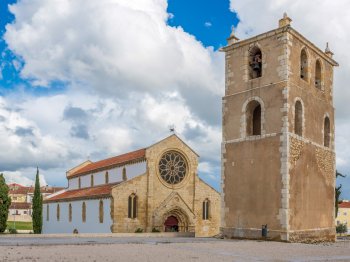Explore the best places
Discover new places in Tomar
TomarPadel
- leisure
Rua D. João I - Vale Cabrito
2305-441, Tomar
Este espaço conta com três campos de padel de última geração, bar com esplanada e loja.

Convento de Cristo
- heritage
Igreja do Castelo Templário
2300-497, Tomar
It initially belonged to the Order of the Temple and passed, in the reign of King Dinis, to the Order of Christ. It is one of the main monuments of national architecture, where all the aesthetic stages, from the 12th to the 18th century, are profusely documented. The Cloister of King João III stands out, the main Cloister of the Convent of Christ, considered the most monumental and beautiful work of the Renaissance, carried out by the architect Diogo de Torralva. Also noteworthy are the Cloister of Washings and the Cloister of King Henrique, which date back to the first …
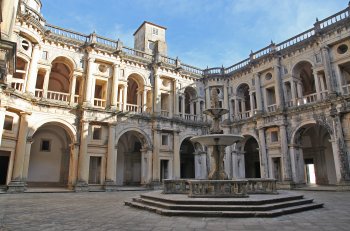
Hotel Bonjardim
- hotels
Praceta de Santo André, 5
2300-445, Tomar
Boarding house with 14 rooms in the new area of the city, next to the main arteries and Templars.
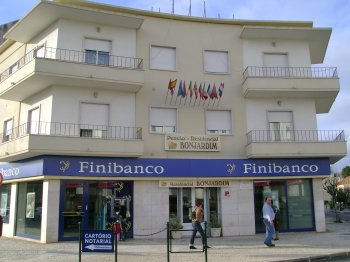
Castelo de Tomar
- heritage
Estrada do Convento, 8
2300-497, Tomar
Castle built in the 12th century with the aim of becoming the seat of the Knights Templar. Built in a high location, only the walls that surround the citadel, the castle with its keep and the temple with a circular plan remain from the original building. Inside the temple, you can see an octagonal "charola", a Romanesque-style building. D. Henrique built two cloisters and the Palaces. D. Manuel added the Manueline nave, whose portico and Chapter house, with its famous window, are stunning. This castle was built by Gualdim Paes and is part of the offensive-defensive system of the reconquest. …

Cine-Teatro Paraíso
- heritage
Rua da Infantaria, 15
2300-573, Tomar
Cinetheater with a room with a "U" plan with a capacity of 392 seats. It was in 1855 that the construction of the Teatro Nabantino began, in the place where, later, the Cineteatro Paraíso would appear, inaugurated in 1924.
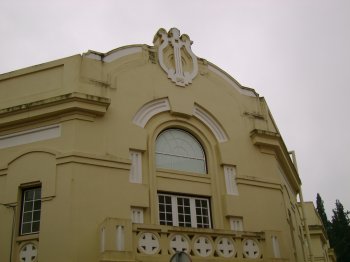
Arco das Freiras
- heritage
Rua de Santa Iria
2300, Tomar
Arch from the 16th century, serving as a passageway over a public road, establishing communication between two convent buildings.
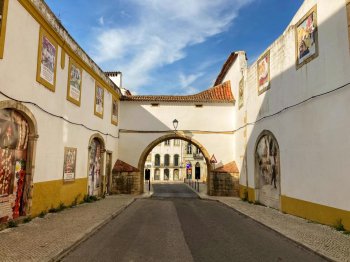
Moinhos e Lagares d'El-Rei
- heritage
Rua de João Carlos Everard
2300-561, Tomar
Set of buildings on the right bank of the Nabão River, on a platform built on an artificial channel that diverts the waters of the Nabão River. Mills and hydraulic presses operated there, and there are projects to transform the space into a center for science and industrial archeology.
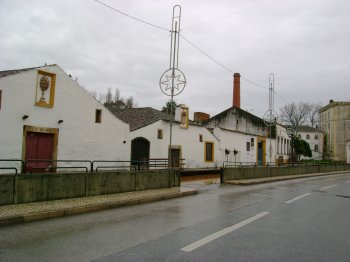
Percurso Centro Histórico - Colina do Castelo de Tomar
- heritage
Calçada de São Tiago
2300, Tomar
The Hill of Castelo de Tomar has enough attractions to attract any visitor, including the Convent of Christ, a world heritage site, and a jewel of Manueline art. The Castle and its walls are worth a close visit, as is the Chapel of Nossa Senhora da Conceição, from the 16th century and one of the last works by the architect João Castilho. Enveloping the hill area, the National Forest of Sete Montes is the heart of the city and a favorite leisure spot for the people of Tomar. Vast forests that hide secrets and places of great beauty, especially the …
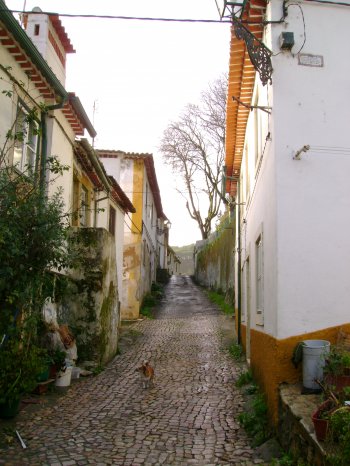
Igreja de São João Baptista
- heritage
Rua de São João, 135
2300-550, Tomar
The foundation date of this church is uncertain, but it is known that it was rebuilt at the end of the 15th century by Dom Manuel I and completed around 1510. It has three naves defined by pointed arches and is flanked by a bell tower. It is decorated with Manueline motifs and, inside, the pulpit and the vault of the chancel stand out. It was classified as a National Monument in 1910.

Igreja de Santa Maria dos Olivais
- heritage
Rua Aquiles de Mota Lima
2300-455, Tomar
Temple from the 13th century. It appears to have been part of a Convent of Benedicts, still in the period when the town was called Nabância. It was rebuilt by D. Gualdim Pais, in 1160, who made it the pantheon of the Templars in Portugal. Its structure presents transition elements from the Romanesque to the Gothic style, the latter being predominant. A large rose window stands out on the façade, surmounting the portico with four archivolts. Over the rose window you can see the mark of the Knights Templar, the Signum Salomonis. In the sacristy, with a 16th century vault, …
